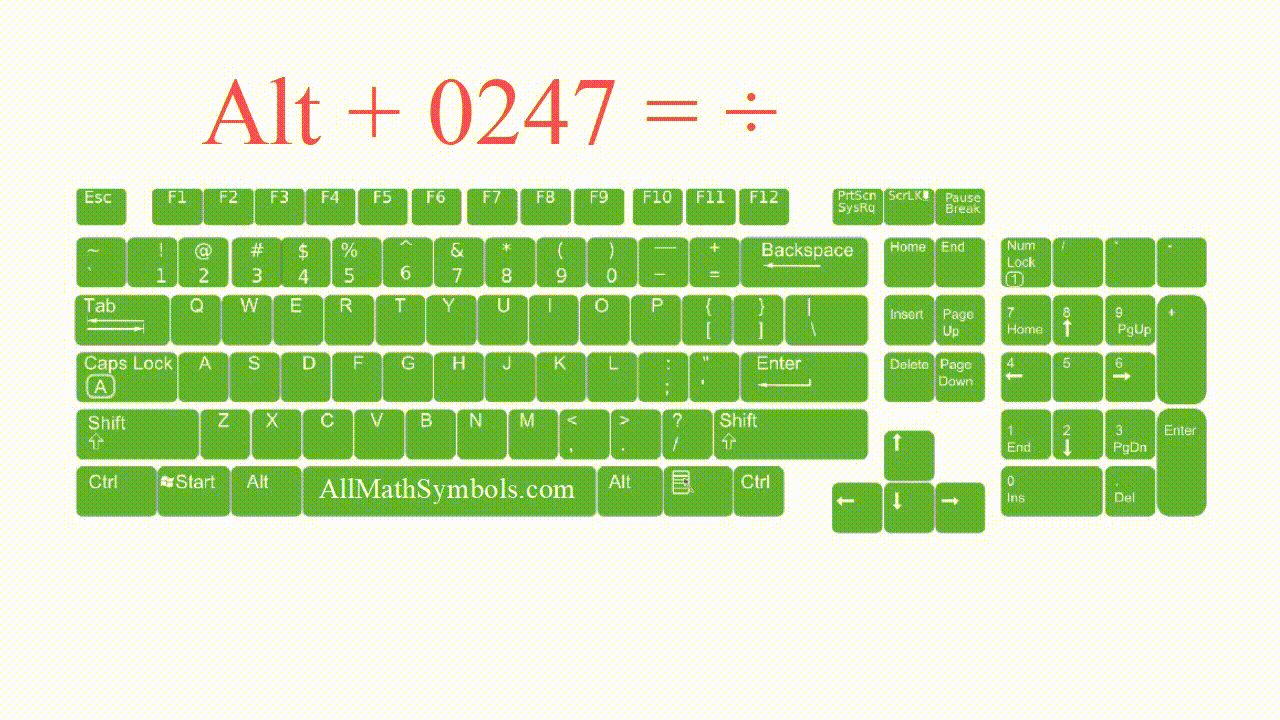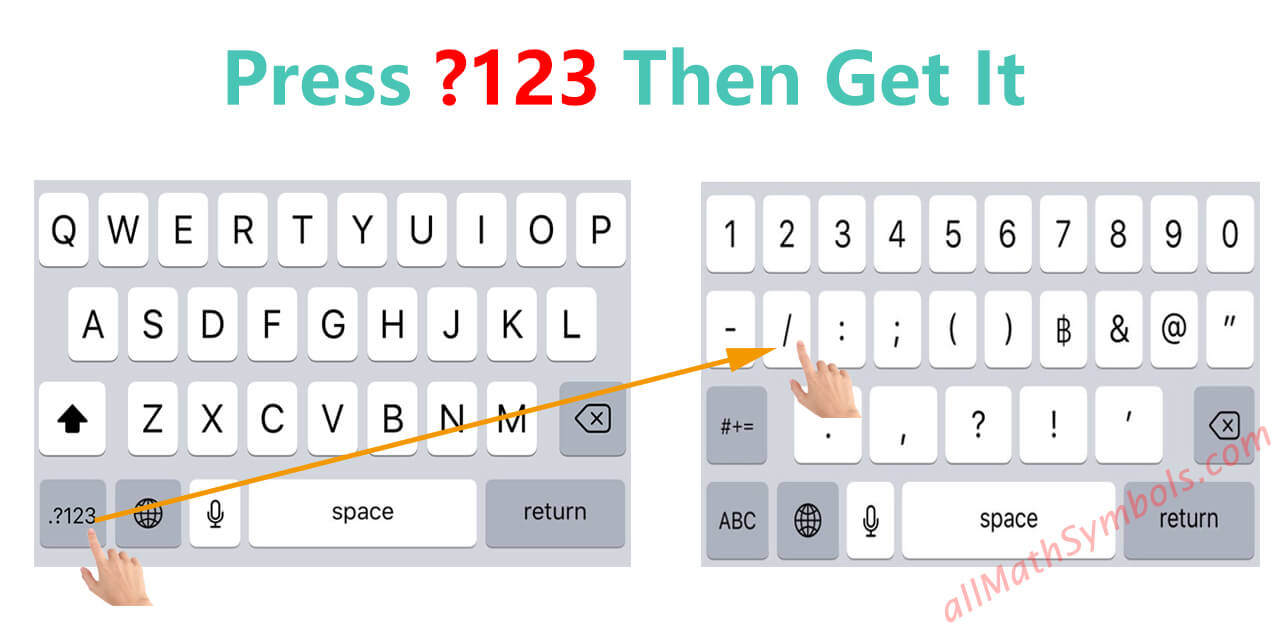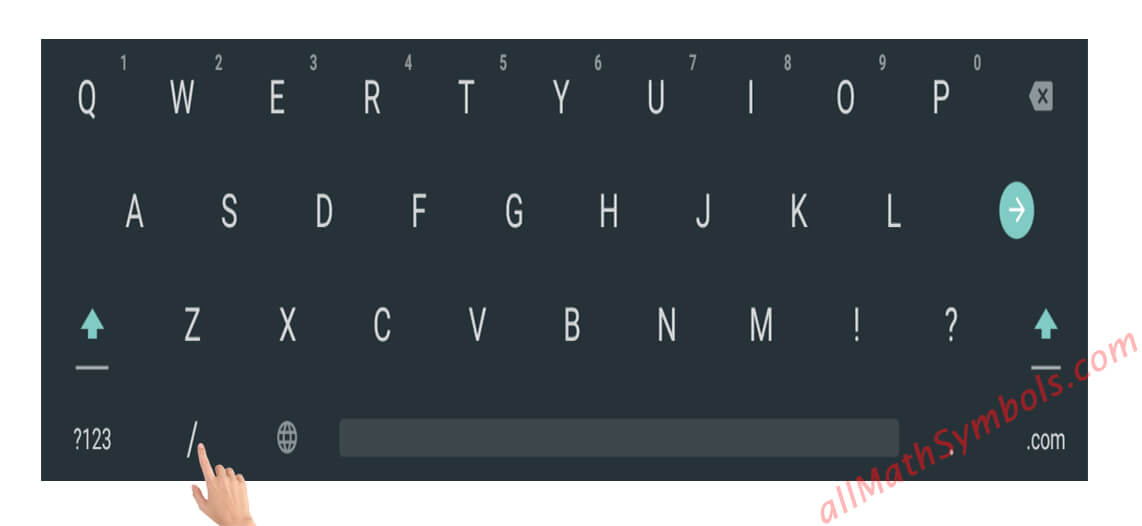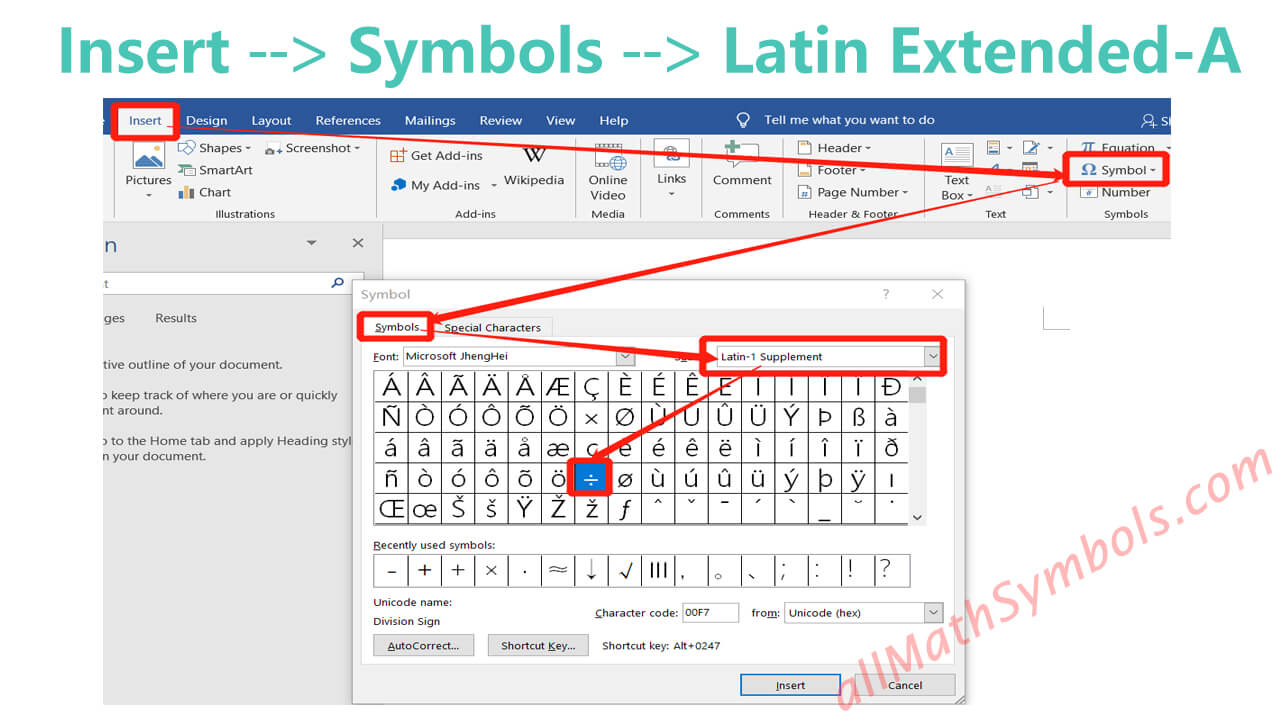Division Symbol
In the modern world, the division sign has its importance when it comes to the subject of mathematics. The usage of division surrounds you. If you are well aware of the division sign, does it serve you well? Not at all. You can never underestimate the significance of division related to its symbols, how we can use them when you can use them, and the basic questions.
Its symbol (÷) was first used in 1659 in the book written by Johann Rahn. Apart from being used in mathematics, the division process is also used in computers. It is used in the encoding and entry process on the keyboard also includes it. If you're wondering about division signs, their usage, and you can type a division sign on the keyboard. All your queries will be addressed ideally as this article contain all the details of the division process.
Without further ado, let's discuss this in detail.
What is a division sign, and what is its meaning in mathematics?
We have discussed the history of the division symbol the first used. Now let's get into the true meaning of division in mathematics and what it is.
The division process is used to distribute the larger things into similar equal parts. For example, if you have one thousand rupees and you have to distribute them among 10 individuals. Then, you have to divide thousand over 10 to get the 10th part of this amount.
1000 ÷ 10 = 100
In other words, the division process is the inverse process of multiplication. For example, if we multiple 100 with 10, then the exact amount will be obtained.
100 x 10 = 1000
It is a method for equal partitioning of the large quantity by which we give equal shares. The number you're dividing is named as "Dividend," and the no. with which you're dividing is called "Divisor".
Different signs of division
As we have discussed the exact meaning and usage of the division process, let's move towards the different signs used for the division process. Different signs can be used between two no to show the division process. However, a few of them are commonly used in mathematics. The various signs are given below:
Division Sign (÷)
This is the most commonly used sign for the division process in mathematics. It is the short horizontal line where one dot is placed above, and one is below the line. This sign is specially named Obelus. As we discussed above, the division sign is used in 1659 in the book written by Johann Rahn. Interestingly the sign which had been used for the division process was the same Obelus sign.
This sign is used in engineering to represent different values, especially in Italy and Poland and in some other countries. After being used by the Swiss mathematician, its usage increased so much that it took the permanent place as division sign being the most popular one. e.g. 15÷ 3 = 5
Slash Sign (/)
This is the 2nd sign being used for the division process. Though it's used for many purposes apart from the division process, we discuss it only as the division process. When it comes to its usage, De-Morgan firstly used it in the mid of nineteenth century. Before that period, it was used for fractions or ratios.
E.g. 15/3 = 5
To indicate the division between the two no's, it is often used. Additionally, the Obelus sign can be replaced with a slash sign. The purpose remains the same: Division.
For example, 15 ÷ 3 can be written as 15/3. The result is the same.
Fraction Sign (—)
This is the 3rd sign used for division. The horizontal line where one figure is written above this horizontal line and the other is written below the line.
This is also used alternatively to the other two signs. It serves the same purpose the other signs do. People are familiar with this sign which means it clearly shows the division process.
The lower term is divided on the upper term to the accurate answer. The reverse process can lead to the wrong answer.
The process of division
When it comes to the division process, it basically divides the big term into small parts that are equal in no. for example, if we want to make 4 parts of 48, then it will undergo division process and when 48 is divided by 4 then answer will we will get the answer for one part, i.e., 12.
48 ÷ 4 = 12
As this is the inverse process of the multiplication, then we can multiply 12 with 4 to make sure whether the answer is right or not. 12 × 4 = 48
When you can use division sign
After getting aware of the division signs, now the question arises: Can we use this division process or "Why do we need it?" In our daily life, we have to deal with figures where we have to make small desired parts of that figure. In earlier ages, the calculation process didn't have specific rules but put marks on sheep bodies. This could be used for short no's. When the world made progress, this inverse process of multiplication was invented by the mathematician. In business, whilst dealing with huge no's, the old method fails. This is where the division process is used to have equal segmentation of the huge figures as per needs.
Suppose you're a businessman and earn 1 million profit per month. Out of 1 million, you reserve 1 lac for your employees, which 10 in total. Now, if they're at an equal level, you will make ten parts of 1 lac to make an equal salary for each one of them, which is ten thousand. It is just an example for better understanding of the usage of the division sign. It's up to you which sign you use for division purposes. This doesn't make any difference as the result will be the same.
How to type division signs?
In this era, different modes are available in order to proceed division process. Suppose you have a calculator, then there's no worry to have the exact answer. But if you're on the computer or mobile, then how you type division sign for writing purpose on keyboard. This is the most common question, and 95% of people don't know how to use these division signs to proceed division process.
Codes of Division signs
| Unicode | U+00F7 | |
|---|---|---|
| Alt Code | Alt 0247 | |
| ASCII Code | 247 | |
| Hex Code | ÷ | |
| HTML Code | ÷ | |
| CSS Code | \00F7 | |
| HTML Entity | ÷ |
Fun-Facts about Division
There are different interesting fun-facts in division process that make it distinguished among several mathematical methods. Some of them are given below:
- If some no is divided by 1, then the original no will be the same as the quotient. It doesn't make any difference to the answer. E.g. 12 ÷ 1 = 12
- If you divide any no by zero, then surprisingly, the answer would be undefined.
- If zero divide any no, the answer will always be zero. E.g. 0 ÷ 122= 0
- If you divide the no by the same no, then the answer will always be 1 no matter how big no are. E.g. 1222 ÷ 1222= 1
FAQs
Conclusion
The division is one of the essential arithmetic pillars that has its importance in mathematics. It meant to distribute the big things into smaller equal parts as per needs. Your daily life has become dependent on division due to its role in the calculation. There are various signs used for this division process as per education level. i.e. (÷), (—), (/) (these are the common ones).
Different methods are available to type division signs on Windows, word, excel, Android and IPhone. As far as different codes are concerned for division signs, they help you perform your PC's division process. There are various questions related to the division process that may come up within the people's minds. To learn the division process, one needs to learn the basics and be well aware of the division signs.




